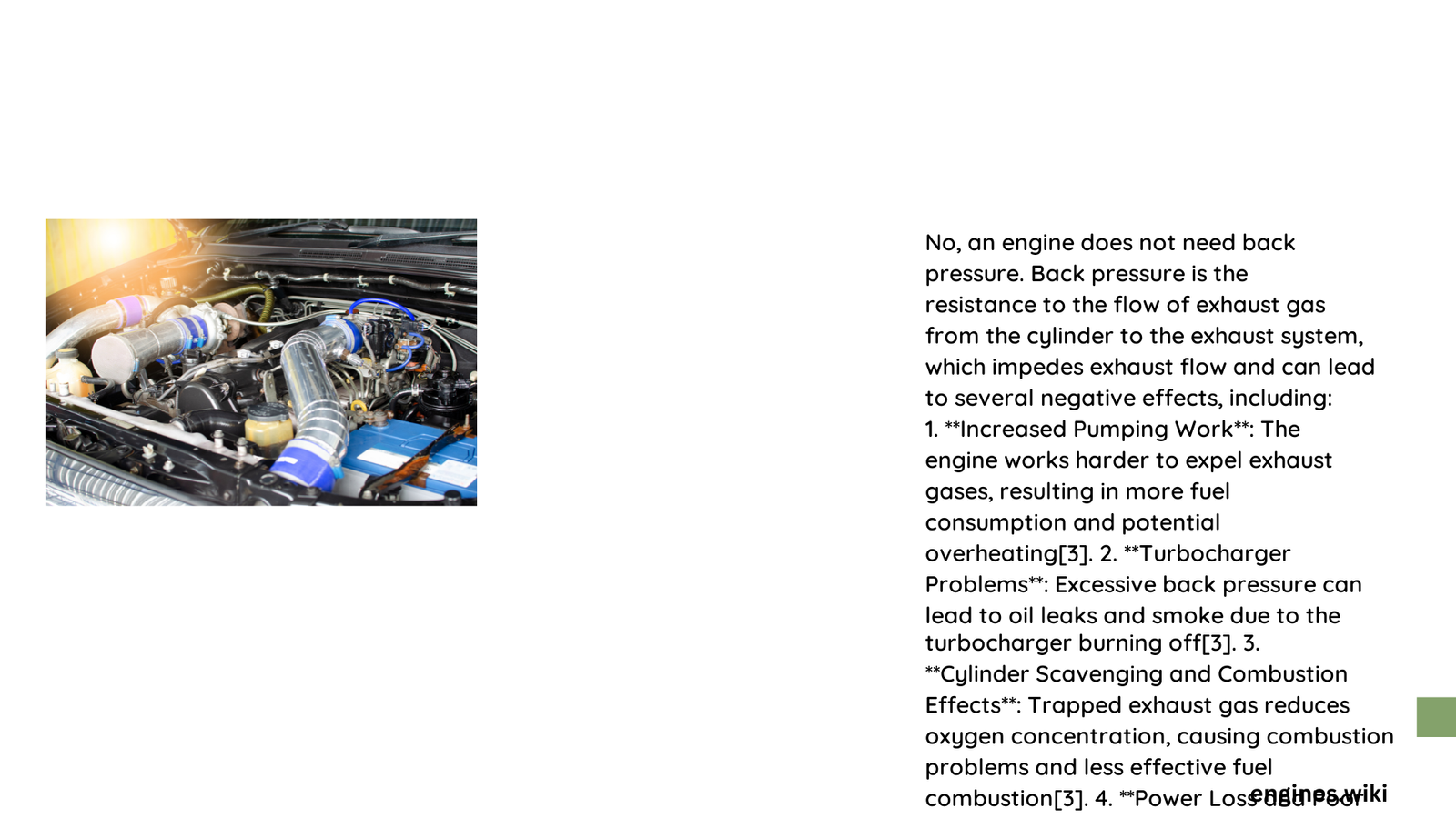Engines require a delicate balance of back pressure to optimize performance, fuel efficiency, and power output. While excessive back pressure can significantly reduce engine efficiency, a minimal amount plays a crucial role in maintaining exhaust gas velocity, turbocharger performance, and overall engine dynamics. Understanding the nuanced relationship between back pressure and engine performance is essential for automotive engineers and enthusiasts seeking to maximize engine potential.
What Is Back Pressure in an Engine?
Back pressure represents the resistance encountered by exhaust gases as they exit an engine’s exhaust system. This resistance is created by various components like mufflers, catalytic converters, and exhaust pipes. The amount of back pressure can dramatically influence an engine’s performance, efficiency, and power generation.
How Does Back Pressure Affect Different Engine Types?
Naturally Aspirated Engines
- Minimal back pressure is crucial
- Even 1-2 psi increase can cause power losses
- Ideal scenario: Pressure closest to atmospheric conditions
Turbocharged Engines
- More tolerant to back pressure variations
- Optimal back pressure range: Atmospheric to 34 psi
- Specific limits based on engine size:
- Less than 50 kW: 40 kPa (5.8 psi)
- 50-500 kW: 20 kPa (2.9 psi)
- 500 kW and above: 10 kPa (1.45 psi)
Performance Implications of Back Pressure

| Back Pressure Level | Fuel Consumption Impact | Power Output Effect |
|---|---|---|
| Low (1-2 psi) | Minimal increase | Optimal performance |
| Medium (10-20 kPa) | 1.5-2.5% increase | Moderate reduction |
| High (>34 psi) | 3-4.5% increase | Significant reduction |
Quantifiable Performance Data
Research demonstrates the direct correlation between back pressure and engine performance:
- Turbocharged engines with 48 psi back pressure produced:
- 385 wheel horsepower
-
397 ft-lbs torque
-
Same engines with reduced back pressure (32 psi):
- 420 wheel horsepower
- 475 ft-lbs torque
Critical Factors Influencing Back Pressure
- Exhaust System Design
- Component restrictions
- Pipe diameter
-
Muffler configuration
-
Engine Type
- Naturally aspirated vs. turbocharged
-
Diesel vs. gasoline engines
-
Operating Conditions
- RPM
- Load
- Ambient temperature
Strategies to Optimize Back Pressure
- Use larger diameter exhaust pipes
- Select low-restriction mufflers
- Implement precision-engineered exhaust systems
- Regular maintenance to prevent blockages
Technical Considerations
Achieving optimal back pressure requires:
– Precise engineering
– Careful component selection
– Understanding specific engine characteristics
– Balancing performance with emissions compliance
Expert Recommendations
- Monitor back pressure regularly
- Use professional diagnostic tools
- Consult manufacturer specifications
- Consider professional tuning for performance optimization
Potential Risks of Improper Back Pressure
- Increased fuel consumption
- Reduced engine power
- Higher exhaust temperatures
- Potential long-term engine damage
Conclusion
Back pressure is a complex yet critical aspect of engine performance. While engines do need a minimal amount of back pressure, excessive resistance can significantly compromise efficiency and power output.
Reference:
– DieselNet – Engine Exhaust Back Pressure
– The Diesel Stop – Exhaust Backpressure Discussion
– EvolutionM.net – Backpressure Technical Discussion
